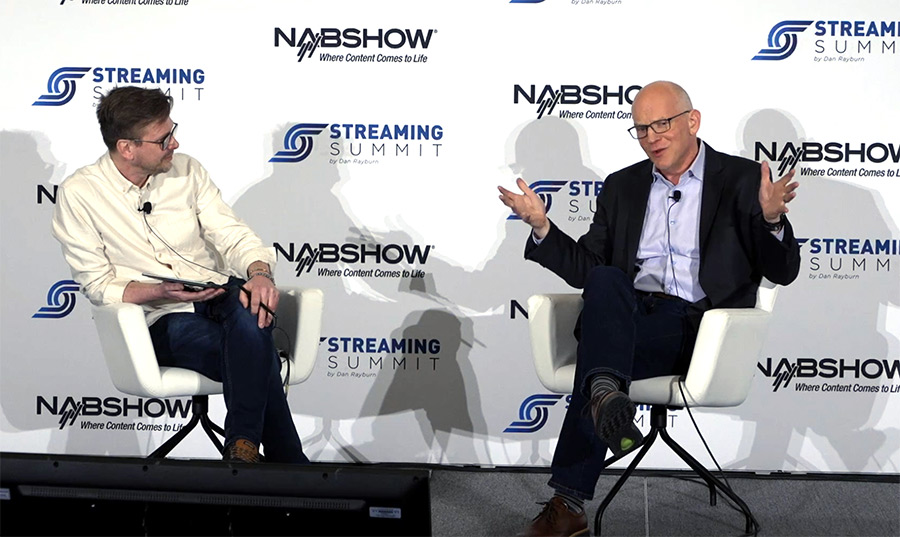Last week I was in Madrid at the SportsPro OTT Summit, and without question, one of the hottest topics was centered around end-to-end direct-to-consumer (D2C) streaming applications. Over the past 5-10 years, we’ve seen a significant shift from sports content being based solely with pay-TV operators and broadcasters. It’s now moving towards some of the industry streaming service giants such as Amazon Prime, Apple and Disney as well as sports rights holders taking back control of their content. During a fireside chat at the show, my colleague Chris Wilson explained how the NBA re-thought its streaming infrastructure for scale and growth.
The significance of sports rights-holders going D2C is simple. The rights-holders can now take control of all the various monetization and engagement opportunities that are on offer. This shift relates to rights-holders of all sizes. While the content owner may own relatively niche content, it can still be valuable and lucrative. For example, if you can secure 50,000 subscribers to pay $10 monthly for a service, that’s still a very strong form of revenue. For that reason, many more content owners and sports leagues are looking to take control of their content revenues and launch their own D2C services. And based on the conversations I had with attendees at the SportsPro OTT Summit, there are four common challenges to realizing these ambitions.
The need to scale and grow a platform
The first big challenge is around the audience. Even if a service provider aspires to generate a million subscribers within a two-year time frame, it’s hard to plan what the first day or week will look like. Will they reach 10,000 subscribers? 50,000? 100,000? Of course, a well-established brand may have a market that’s ready to plan for larger numbers from launch but if that number of subscribers does not translate on day one, the service provider could have a service designed to handle enormous numbers and be forced to bear all the associated costs.
Peak loads are another issue in this area. A football league may want to stream games on a Saturday afternoon, where the capacity needs to handle up to 10 simultaneous games. This, of course, means there will be many subscribers on the platform at this time. But for the rest of the week, this capacity is unnecessary. So there must be a mechanism to scale the platform up and down to cope with that differential.
Building and maintaining a high-quality of experience
Maintaining a high quality of experience is a huge topic, but it can mean several things. First, it’s a question of reliability. Even five years ago, the streaming market had a relatively forgiving audience. If a user pressed the play button and the video displayed an error message, people would be mildly annoyed but accept that the service was still in its formative phase. However, that level of forgiveness is now over. If the video doesn’t start, audiences are left frustrated and broadcast their views across social media and their friendship circle. ‘Broadcast quality’ – the level of experience people expects from traditional pay-TV operators – is the minimum standard for streaming platforms too.
Quality of experience also applies to the issue of scale. Several high-profile events in the past two years have experienced service outages because their scalability didn’t match the number of consumers wishing to view the event. Managing large scale streaming events requires a partner with a huge amount of experience who can understand and optimize the end-to-end video workflow.
Many OTT services are also leading the charge in video quality, especially in terms of 4K, HDR, and low-latency content. This can help services build additional monetization options and is essential to ensure flexible entitlements can match the quality of consumers’ expectations, whether it’s a free ad-supported, transactional, or subscription led service.
The importance of rapid time-to-market
Sports franchises are reliant on quick launch times for their D2C services. Unlike existing broadcasters or content owners, sports franchises are new movers in their own markets, and the financial commitments to launching a service are enormous. And building a service is a highly technical challenge. Thanks to the benefits of the public cloud, the barriers are no longer insurmountable, and sports franchises can deliver better services, faster. MediaKind, for instance, can work with any cloud provider, which enables us to spin up and deploy streaming services very quickly. The back-end configurations are managed effectively, ensuring that we can deploy updates and new service features rapidly while scaling and responding to peaks in demand.
Data and analytics drive success
Finally, to be able to monetize a service, you need to be able to understand your consumer base and how they fit into the broader ecosystem. This knowledge means you can build services that address their needs and the types of content they want. Ultimately this leads to adapting effectively – that could be a pay-per-month revenue model or building a service around an advertising strategy. But without knowing your audience’s habits, it’s a futile game.
As I’ve mentioned on these pages before, relevant content is more than a discussion around streaming. You need to be able to repackage content and adopt new tools to access new in-game innovations. Targeted highlights, pop-up channels focused on audience behavior, multi-camera viewpoints, betting odds, and fantasy games – there are myriad of opportunities to leverage. The standard, production director-led viewpoints are no longer enough in today’s sports world. The audience wants to personalize their experience, and they want control over it. Data and analytics are now critical to success and deepening the relationship between the audience and its brand.



